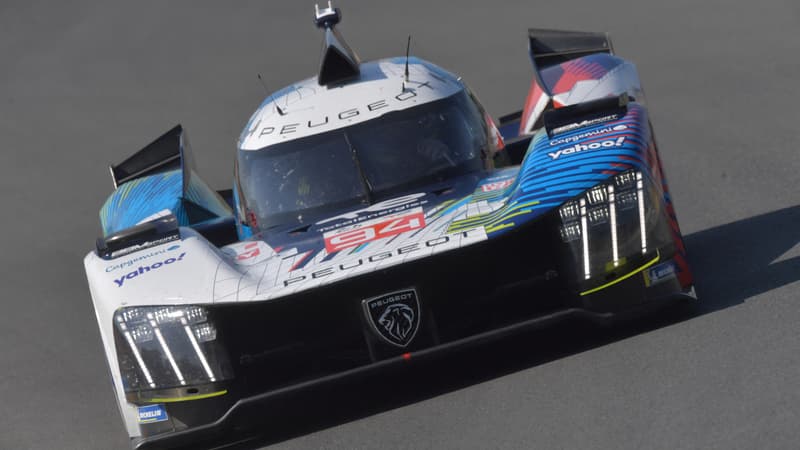Le Mans, automotive technology laboratory, Le Mans also digital laboratory. As in other disciplines, the endurance championship relies increasingly on data, simulation and artificial intelligence to develop the car, use it in the race and improve it throughout the season. This is particularly the case with Peugeot.
Develop car and simulator.
The brand returns in 2023 after a ten-year absence in a totally new category, that of hypercars. To design the 9X8 lining up on the 24 Hours grid this weekend, Peugeot worked hard using computer simulation. Before doing physical tests with the car.
“We did a lot of virtual testing, we developed the simulator pretty much at the same time, with an effort being made to make this simulation as close to reality as possible,” explains Olivier Jansonnie, Peugeot Sports technical director.
A bit of artificial intelligence
The brand then added artificial intelligence to improve the car and the simulator together, after the first tests in real conditions. “One of the challenges is to perfectly correlate this simulator with reality,” sums up Jean-Marc Finot, vice president in charge of motorsports at Stellantis.
“When we do tests, we measure more than 500 pieces of data continuously in the car, such as lateral and vertical accelerations, speed variations, and then we have to manage this data, he continues. Therefore, we have defined a “data lake” (a centralized storage place, editor’s note), in which the data is dumped and which performs automatic calibrations to reset the simulator and find this reality in the simulator to tune the car, train the drivers, define the settings that will later be tested on the bench and in the end he will return to the car”.
Play some missing data
Digital also supports the development of the 9X8 for racing. “We don’t adjust 100% in a simulator, but we are already closing doors, we are taking adjustment options that we could test later in track time, which is still relatively limited,” confesses Olivier Jansonnie. And that also allows us to review a series of procedures in the car.”
Artificial intelligence is also used during the race, for strategy management. “We use artificial intelligence to reproduce certain signals, confides Jean-Marc Finot. For example, certain sensors can be used in tests, but not in races, so we know how to reconstruct the information and we have virtual sensors to have information available without having sensors “.
What in particular to manage energy management strategies, crucial in hypercars with high-performance hybrid engines.
Source: BFM TV


